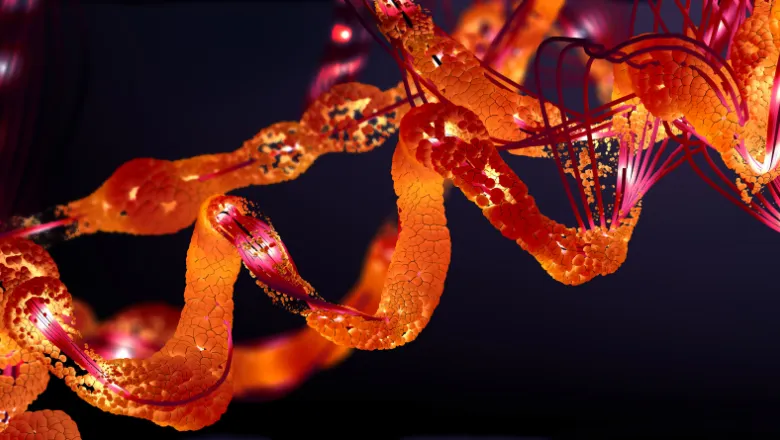Professor Andre Cobb's EPSRC Standard Research Grant will unlock a new level of control over chemical reactions in industry and medicine.

Professor Andre Cobb from the Department of Chemistry has been awarded a £1.2 million Engineering and Physical Sciences Research Council Standard Research Grant to build a new kind of modular catalyst with scientists at the University of Bristol. The catalyst allows for greater control of chemical reactions in industries such as pharmaceuticals and agrochemicals.
Based around his previous work on 'foldamers', synthetic molecules designed to imitate naturally occurring chains of amino acids that can fold into complex shapes, Professor Cobb hopes to design a helical shaped scaffold that new catalysts can be built upon. The team believes this will give researchers an unparalleled level of control over chemical reactions in areas like drug development.
Many catalysts in this area tend to be derived from small natural products that are difficult to modify. In our peptide-inspired systems, this is far easier because we just need to swap out an individual Lego brick."
Professor Andre Cobb
In nature, amino acids form the building blocks of proteins which carry out many important processes in the body but can also be created for use in areas like fertiliser and drug development.
In the body, they often come together in a sequence that leads towards more complex structures, such as a helices, which can bring different chemical groups close together in three-dimensional space through folding, coordinating reactions or molecular recognition.
Professor Cobb and the team combine natural amino acids with unnatural ones to form unique helices, enabling them to build modular biomimetic catalysts that are easier to modify than solely man-made ones.
They aim to create a library of modular scaffolds which, as Professor Cobb explains, work like "Lego bricks that researchers can link together easily to create bespoke catalysts.
"Many catalysts in this area tend to be derived from small natural products that are difficult to modify. In our peptide-inspired systems, this is far easier because we just need to swap out an individual Lego brick."
The team also believe the helical catalysts will be an important step forward for controlling "asymmetric" or chiral reactions. These are where the output is one of two almost identical molecules which are non-superimposable mirror images of each other, such as the left and right hand when placed on top of one another.
Inspired by biological helices, this project seeks to transform the design of foldamer based asymmetric catalysts, which will not only advance the foldamer concept but seek to bring benefits to industry and medicine in the longer term."
Daniel Smith, Head of Theme for Physical Sciences at EPSRC
For the pharmaceutical and agrochemical industries in particular, the ability to control the formation of just one mirror image is critical to the biological profile of a compound.
While chiral compounds are virtually identical, being mirror images of each other, they can lead to profoundly different biological effects, as they interact in different ways. A major focus of this grant will be to use the shape of the helix - itself a 'handed' molecule to control the generation of chiral molecules.
Professor Cobb will be working alongside Professor Craig Butts from the University of Bristol, who will be using computational modelling to check the efficacy and 3D structure of the helical scaffolds being created at King's.
Daniel Smith, Head of Theme for Physical Sciences at EPSRC said of the project:
"Supporting curiosity-driven investigator-led research, like this project, is central to EPSRC's mission, laying the groundwork for future innovation. Inspired by biological helices, this project seeks to transform the design of foldamer based asymmetric catalysts, which will not only advance the foldamer concept but seek to bring benefits to industry and medicine in the longer term."






